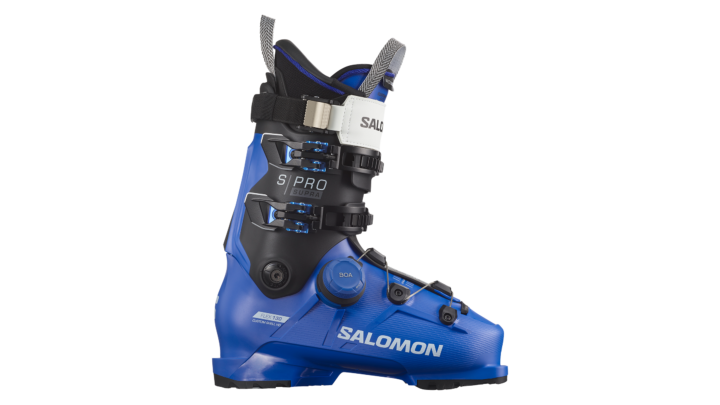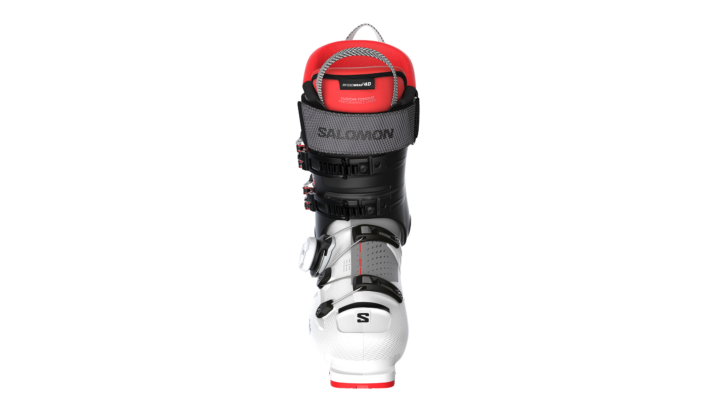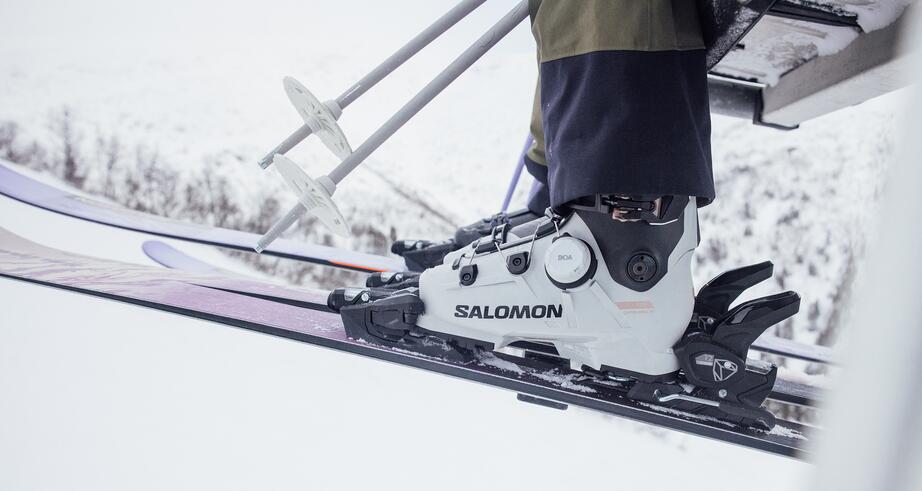When Bill Johnson won the gold in the 1984 Olympic men’s downhill in modern-day Bosnia, he brought about a permanent shift in the ski boot marketplace. Skiing in the Raichle Flexon Comp, a three-piece Cabrio shell (soon to become one of the most popular models in the world), he finished over a quarter of a second faster than every skier in a traditional two-piece boot. The last time we saw such a radical shift in boot construction was in 1962, when Bob Lange introduced the plastic shell. But now, 40 years after Johnson’s victory that led to ski boot evolution, a few brands are once again breaking the mold of the classic four-buckle boot. For the 2023-2024 season, Salomon, Atomic, K2, and Fischer will each debut a ski boot with a wholly-new mold and BOA closure system on the lower shell of the boot.
It’s a product development story long in the making. In February 2020—just before the pandemic hit—K2’s product development team met with representatives from BOA, the company that produces the cable-closure system used in gear items like helmets, snowboard boots, and inline skates. BOA purchased the mold for an old Fischer boot years before and had been tinkering on a closure system specifically developed for alpine ski boots.
BOA systems aren’t new in the ski boot universe—you can find them on touring boots like the Fischer Travers and the Atomic Backland. But there’s a reason BOA hasn’t been integrated in traditional downhill boots up to now: Alpine ski boots have to endure far higher forces and more days on snow than most touring boots, and the BOA cabling system didn’t exactly have a reputation for durability (just ask snowboarders). To be integrated into an alpine boot, a new BOA system had to be developed—one that was bomb-proof, burly, and above all, solve a real problem for skiers.
Ski boots are just about the most uncomfortable type of boot on the planet. Even when they fit well, they don’t fit well. Many skiers struggle with the fit above their midfoot, particularly where the plastic shell overlaps. When the lower shell buckles are cinched tightly, some skiers feel like the top of their foot is being crushed. It’s a known problem without an easy fix since instep height is tricky for boot fitters to adjust. Knowing this, BOA engineers toiled in a back room for a few years and brought a new boot prototype to pitch K2 (with whom BOA had a multi-decade relationship thanks to their collaboration on snowboard boot and rollerskate designs). The new boot had no buckles on its lower shell and instead featured a fat zig-zagging cable fastened by a single large BOA dial. When tightened with the BOA dial, this cable snugs up around the metatarsals without lowering the height over the instep. It’s all about getting your foot closer to the boot, not cinching down the ceiling of the boot.
Tom Pietrowski, global ski boot product line manager for K2, was skeptical. He owned the original Fischer boot (the same one BOA had been tinkering with) and felt that it came down too hard on his instep. So when BOA claimed they had solved this problem while maintaining hold in the heel and forefoot, he had to try it on.
“I put the one on with BOA and it just wrapped my foot perfectly, without pain,” said Pietrowski. “I thought, if they can make this awful boot fit, there’s definitely something there.”
But would a BOA dial and cabling system hold up to the demands of downhill skiing? While a traditional BOA lace is around 1.5 millimeters at its thickest, the lace that closed the modified Fischer boot pitched to K2 was at least twice as thick. This heavy-gauged cable can withstand repeated collisions with a ski edge in the case of a fall.

K2 may have been an early adopter, but other brands soon bought BOA’s pitch as well. At the time, Salomon had been working on developing its S/Pro Alpha line with the main goal of creating a low-volume boot that solved instep pain. When the opportunity arose to work with BOA, they decided not to reuse their brand-new S/Pro Alpha mold. Instead, Salomon spent the additional capital to create a separate, new mold to marry the BOA closure system with a shell designed from the ground up around BOA. Salomon, with its all-new 100-millimeter lasted S/Pro Supra (coming in both unisex and women’s models with flexes ranging from 95 to 130), will utilize a softer plastic on top of the instep to tighten the forefoot evenly while pulling the foot back within the lower shell and locking the heel in the heel pocket.

Dialing in the fit of a medium-volume boot, with a last of around 100 millimeters, is tough. It is the most popular last on the market because it’s deemed “average” by the manufacturers, but how does one account for the margins of slightly narrower and wider feet? K2, for one, is going the way of the Lange RX, using the same tighter heel pocket for both their low and medium-volume boots. The new K2 Recon, Anthem, and Mindbenders with BOA (also unisex and women’s in flexes from 95-130) will all have tighter heel pockets. The new BOA system will also have micro-adjustability, unlike snowboard and touring boots. You can crank the forefoot as tightly as you need but then back it off without popping the entire system open.
The new BOA design has tested so well, other brands are already starting to develop their own versions. Fischer has the all-new RC4 boot in the works and Atomic is cranking on the Hawx Ultra XTD 130 and 115 for the 2023-’24 season.
Head’s president of the winter sports division, Jon Rucker, told SKI that the brand is also working on a BOA system that will eventually migrate all the way to their world cup boots. “Once a boot with a BOA closure wins a gold, it’s all over,” Rucker said. If Bill Johnson’s downhill win all those years ago is any indication, BOA is coming soon to an alpine ski boot near you.
